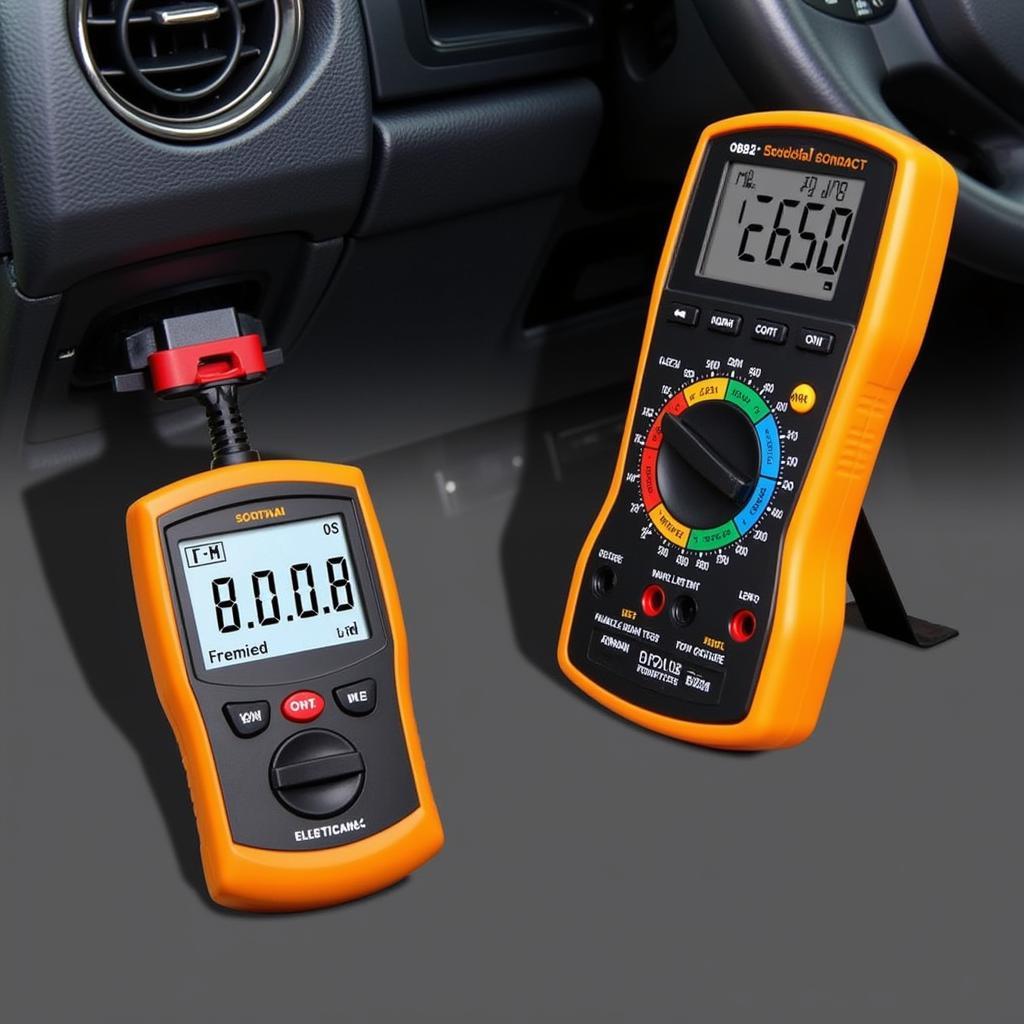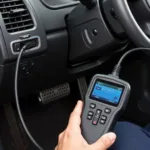DIY car diagnostic is becoming increasingly popular among car owners who want to save money and understand their vehicles better. With the right tools and knowledge, you can diagnose many common car problems yourself, avoiding costly trips to the mechanic. This article will explore the world of DIY car diagnostics, providing you with the information you need to get started. After reading this guide, you’ll be more informed about diagnosing your car’s issues.
Understanding the Basics of DIY Car Diagnostics
Before diving into the specifics, it’s essential to understand what DIY car diagnostic entails. It involves using various tools and techniques to identify the root cause of car problems. This can range from simple visual inspections to using advanced diagnostic scanners. The rise of affordable and user-friendly OBD-II scanners has made DIY car diagnostics more accessible than ever. These scanners connect to your car’s onboard computer and retrieve diagnostic trouble codes (DTCs). Understanding these codes is crucial to pinpointing the problem area.
Choosing the right diagnostic tool is crucial for effective DIY car diagnostics. There are numerous options available, ranging from basic code readers to comprehensive professional-grade scanners. Your choice will depend on your budget, technical skills, and the depth of diagnostics you plan to undertake. For those interested in more advanced options, the car diagnostic tool raspberry pi offers a fascinating exploration of DIY diagnostic tool building.
Essential Tools for DIY Car Diagnostics
What tools do you need for DIY car diagnostic tasks? Several tools are essential for DIY car diagnostics. The most crucial is an OBD-II scanner, which allows you to read and interpret DTCs. Other helpful tools include a multimeter for testing electrical circuits, a code reader to translate DTCs, and a repair manual specific to your vehicle’s make and model.
 OBD2 Scanner and Multimeter for DIY Car Diagnostics
OBD2 Scanner and Multimeter for DIY Car Diagnostics
Beyond these essentials, having a good set of basic hand tools, like screwdrivers, wrenches, and pliers, can be invaluable. These will allow you to perform minor repairs or investigations based on the diagnostic results.
How to Perform a DIY Car Diagnostic
Performing a DIY car diagnostic involves a systematic approach. First, connect the OBD-II scanner to your car’s diagnostic port, usually located under the dashboard. Turn on the ignition, and the scanner will retrieve any stored DTCs. Note down these codes and consult a repair manual or online database to understand their meaning.
Once you’ve identified the potential problem area, you can use other tools like a multimeter to test specific components. Remember, DIY car diagnostics are about understanding the problem, not necessarily fixing it yourself. If you’re unsure about anything, it’s always best to consult a qualified mechanic. If you’re based in the UK, you might find the Carly diagnostic UK resource particularly helpful.
Benefits of DIY Car Diagnostics
Why should you consider DIY car diagnostic? There are several benefits to performing DIY car diagnostics. The most obvious is cost savings. By identifying the problem yourself, you can avoid unnecessary diagnostic fees charged by mechanics. Additionally, it empowers you to understand your vehicle better and make informed decisions about repairs. This knowledge can be particularly valuable when dealing with mechanics, helping you avoid unnecessary or overpriced services.
Another benefit is the convenience of diagnosing car troubles at your own pace and on your own schedule. No more waiting for appointments at the garage! With a Bluetooth car diagnostic interface scanner, you can perform diagnostics anytime, anywhere.
Common Mistakes to Avoid in DIY Car Diagnostics
What are some common DIY car diagnostic mistakes to avoid? While DIY car diagnostics can be empowering, it’s crucial to avoid common mistakes. One of the biggest pitfalls is misinterpreting DTCs. Codes often point to a system rather than a specific component, so further investigation is usually required. Another mistake is failing to consider the context of the codes. For instance, a low battery voltage can trigger multiple seemingly unrelated codes.
Also, rushing into repairs based solely on DTCs without proper testing can lead to wasted time and money. Always follow a systematic diagnostic process and consult reliable resources. The Carly diagnostic tool is a great resource to help you understand car diagnostics better. Lastly, remember that DIY car diagnostics has its limitations. Complex problems may still require professional expertise. For more comprehensive diagnostic options, consider the Delphi diagnostic all cars and truck 2019 usb bluetooth.
Conclusion
DIY car diagnostic is a valuable skill for any car owner. It empowers you to understand your vehicle better, save money on repairs, and make informed decisions. By following a systematic approach and using the right tools, you can effectively diagnose many common car problems. However, it’s essential to remember that DIY car diagnostics has its limits. Always consult a qualified mechanic when in doubt.
FAQ
- What is an OBD-II scanner?
- How do I find my car’s diagnostic port?
- Where can I find reliable interpretations of DTCs?
- What should I do if I can’t fix the problem myself?
- Are there any safety precautions I should take when performing DIY car diagnostics?
- What is the difference between a code reader and a scan tool?
- How often should I perform a DIY car diagnostic?
For further assistance, please contact us via WhatsApp: +1(641)206-8880 or email [email protected]. Our customer support team is available 24/7.
